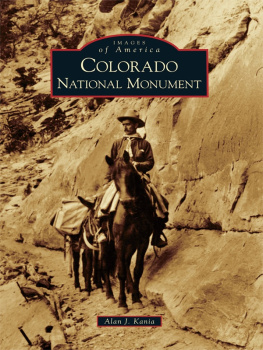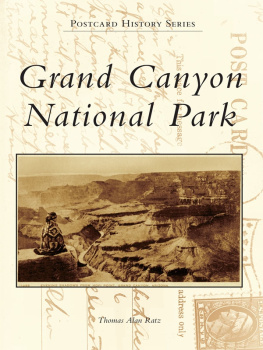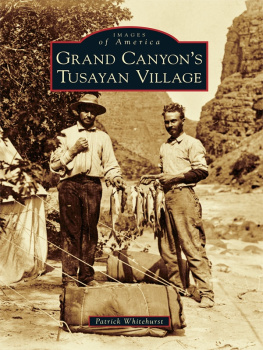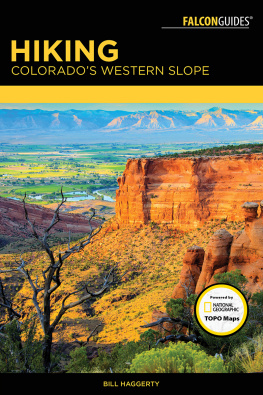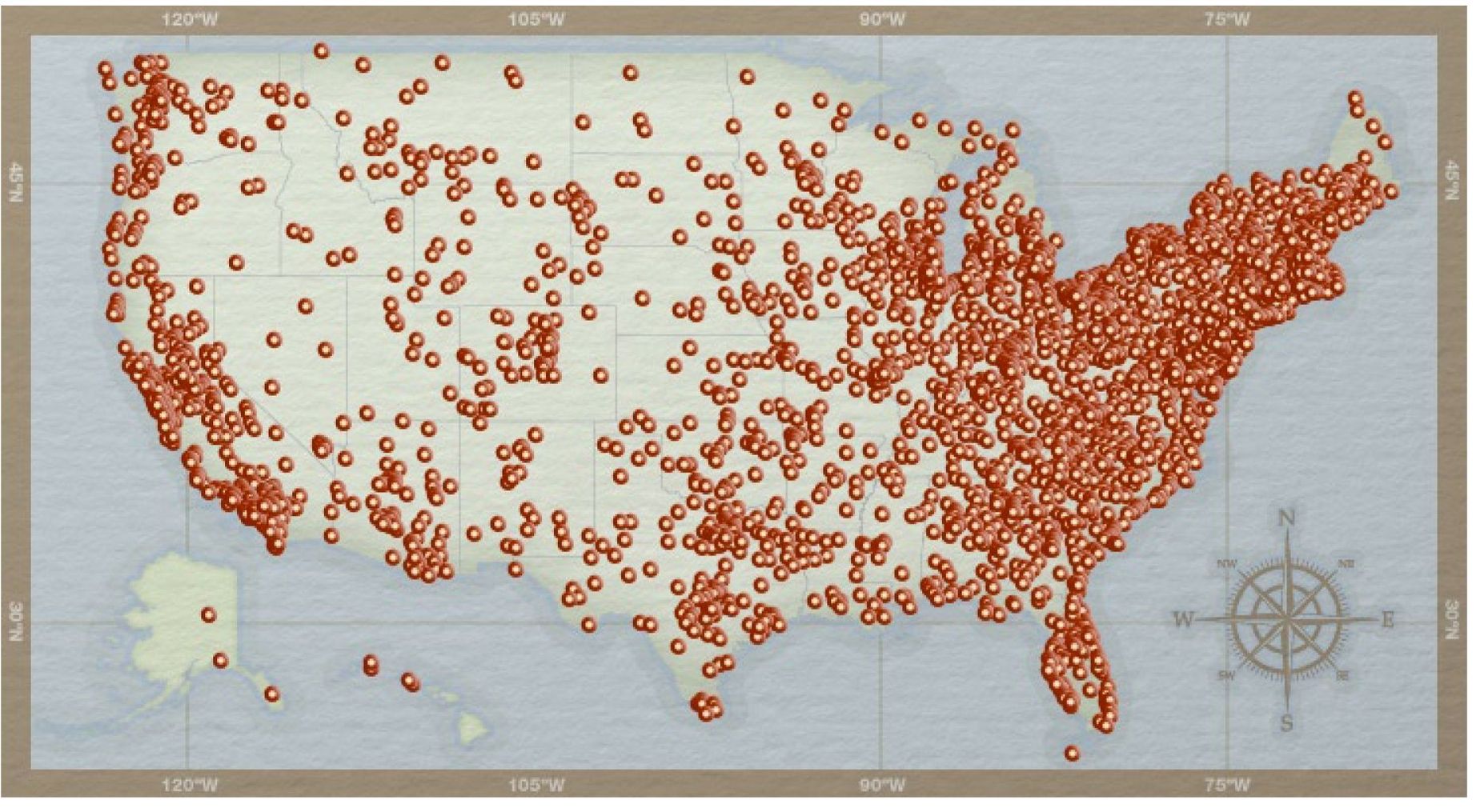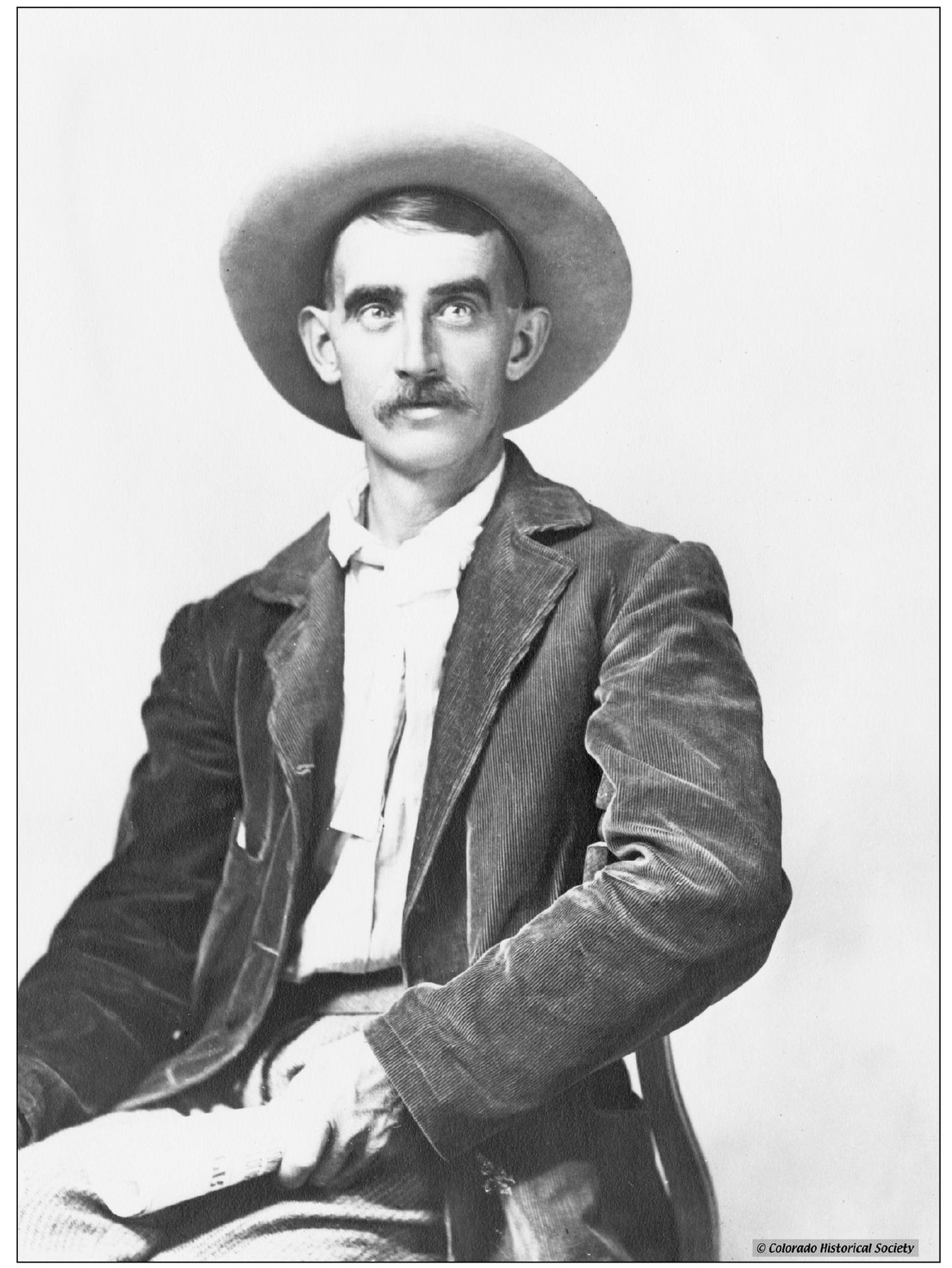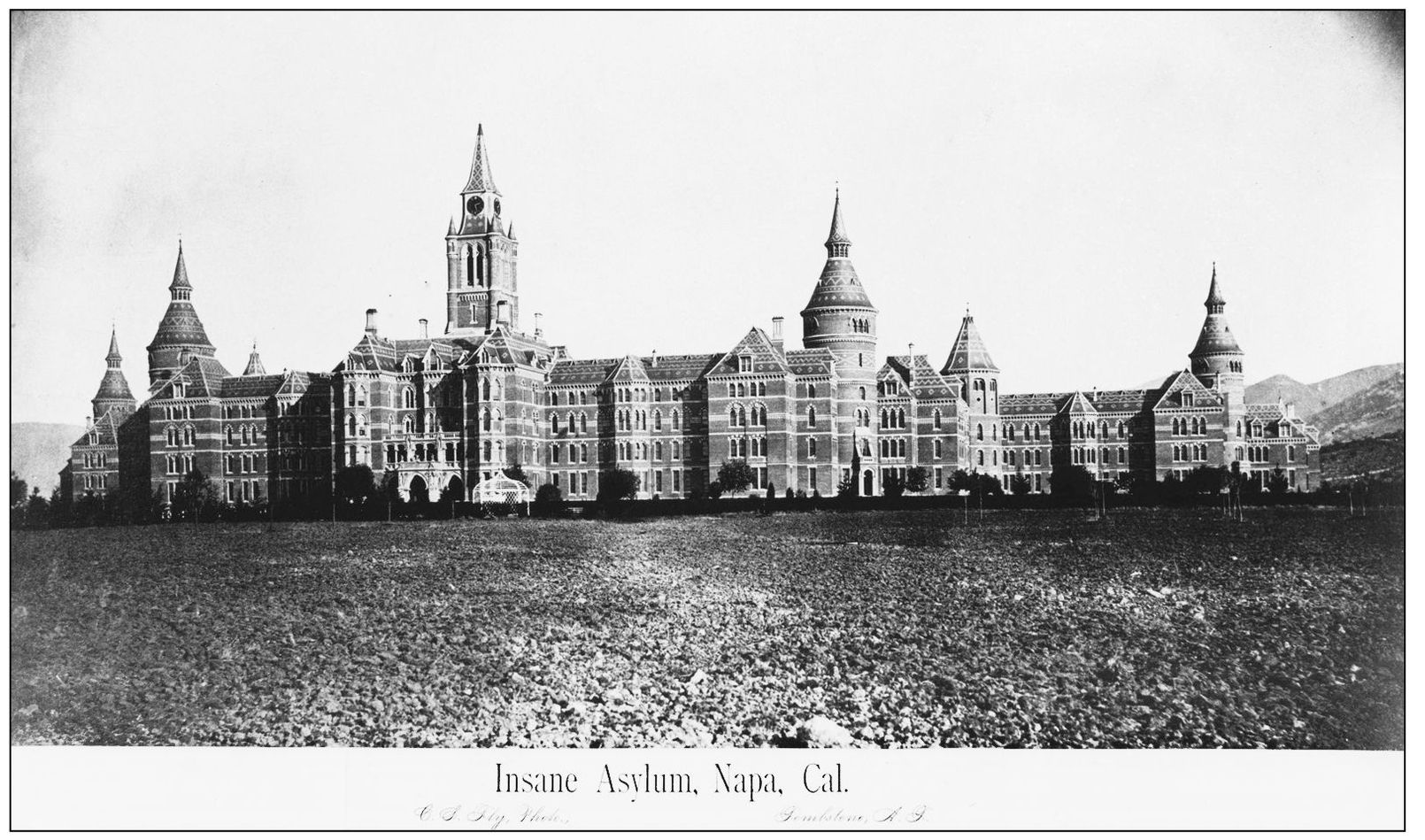ACKNOWLEDGMENTS
My parents, Frank and Genevieve Kania, justified family clutter in simple terms: If you dont have to feed it, keep it. It is that philosophy that prompts my gratitude to the families who opened their family photo albums and scrapbooks to create this tribute to their ancestors and to the Colorado National Monument. A tip of John Ottos broad-brimmed hat goes to the families Benge, Chester, Ela, and Otto.
A great deal of gratitude goes to the archivists at the National Archives and Records Administration, Denver Federal Center, for being so efficient in helping me sift through the National Park Service files.
I am always envious when I deal with the National Park Service. These are the people who live the stories about which I can only write. Special thanks to Denise Hight, manager of the Colorado National Monument Association, and her husband, Steve, for their assistance in gaining access to the park photographs. Thanks also to Michelle Wheatley (park ranger supervisor/education coordinator), Dave Price (chief resource management), Annie Williams (interpretive park ranger) and Hank Schoch (chief ranger, retired) for locating other Colorado National Monument photographs and verifying some of the information used to identify them.
Many of the Colorado National Monument and Civilian Conservation Corps (CCC) camp pictures are in the repository of the National Park Services Western Archeological and Conservation Center. Particular thanks to archivist Lynn Marie Mitchell, Khaleel Saba (assistant archivist), and Kristi Ausfresser (archives technician).
And as always, appreciation goes to the stalwarts of the Colorado archives that I used in completing this bookthe Museum of Western Colorado (Michael Menard, curator of archives/ library), Colorado State Archives, Denver Public Librarys Western History Department, National Park Service archives, and the State Historical Society of Colorado.
I also wish to thank my editors at Arcadia Publishing, Hannah Carney and Jerry Roberts, for their expert guidance and great senses of humor. And to Arcadia author Barbara Proko, who encouraged me to pursue this project.
And many thanks to my wife, Terry, for her patience, guidance, and love during the research, writing, and production of this book.
EPILOGUE
While researching any historic project, it is always rewarding when an obscure piece of information is found. This was a memorandum issued during World War II:
February 12, 1942
MEMORANDUM for the Custodian, Colorado National Monument
In order to conserve paper for the duration of the emergency, it is requested that you discontinue the practice of forwarding memorandums to this office in duplicate, and forward one copy only.
If additional copies are needed, we will make them here. This, of course, does not apply to your monthly narrative report or to any other report which you know requires a stated number of copies.
However, it is noted that you are sending your monthly narrative in eight copies, whereas only seven are required. The monthly travel report should be sent in eight copies, as previously requested.
John S. McLaughlin
Coordinating Superintendent
Find more books like this at
www.imagesofamerica.com
Search for your hometown history, your old
stomping grounds, and even your favorite sports team.
One
JOHN OTTO, HERMIT OF MONUMENT CANYON
John Otto took his progressive upbringing to heart as he traveled throughout the West. A voracious newspaper reader, John followed the unsafe conditions and 12-hour working days miners experienced in tunnel mining. When women were seeking access to the voting booth, John supported their equality. And when the advent of the automobile spurred motorists to make long-distance sojourns, he proposed incorporating the newly established system of national parks into cross-country highway system.
His flamboyant way of promoting his points of view often threatened elected officials during election campaigns. To keep Otto out of the press, he was arrested three times as a threat to state governors. Only one of his insanity trials resulted in a brief incarceration in an asylum in Napa County, California.
When he was released and ultimately settled near Grand Junction, Colorado, he took great pride in challenging the sanity of other Mesa County residents. After all, with his certificate of release, he boasted he was the only person in the county who could actually prove that he was sane.
After working as a laborer on the Fruita (Colorado) Water Pipeline through the scenic canyons southwest of Grand Junction, Otto began promoting the red rocks, majestic spires, and deep canyons. Most residents considered the canyons to be inaccessible box canyons where local cattle ranchers could winter their livestock.
Otto built a series of sophisticated trails that crossed geological uplifts and picked their way along rock walls. With the support of the Grand Junction and Fruita Chambers of Commerce and the editor of the Daily Sentinel , county residents began to appreciate the beauty of the canyons. So successful was their marketing campaign that U.S. president William Taft added the Colorado National Monument to the U.S. National Park Service on May 24, 1911. Because of his dedication to the canyons, Otto was named the first custodian of the Colorado National Monument for a salary of $1 a month. A series of arguments about the location of a coast-to-coast highway that bypassed the monument in the late 1920s resulted in Ottos departure for Northern California in the early 1930s.
Tried three times for insanity (and found sane on each occasion), accused of attempting to assassinate the governor of Colorado (and later exonerated), and often dressed in a green shirt with colored stars for buttons, John Otto became the Colorado National Monuments first custodian and most ardent booster. His prankish sense of humor once prompted him to propose renaming the monument Smith National Park (the commercial possibilities were stupendous, he wrote). An early womens advocate, he was married briefly and later awarded alimony from the bride who deserted him. When he was not writing rambling letters-to-the-editor for local newspapers on current events, he single-handedly built trails in the Colorado National Monument. He was an avid proponent of expanding the park to include the entire Grand Valley around Grand Junction to the Utah border as one of many national parks united by his proposed national park highway system. (Courtesy of the State Historical Society of Colorado.)
While working as an itinerant farm laborer, John Otto questioned why people did not volunteer their services for the betterment of their community. He believed volunteerism was Better than Money. He was so passionate about his credo that townspeople thought he had the potential of becoming violent. California gubernatorial candidate George Pardee became alarmed when Ottos rants interfered with Pardees campaign. He made sure Otto was kept incommunicado in the Napa State Hospital for the insane until after the election. The Castle maintained a backyard where the men could socialize. Fruit orchards, available so men could learn an agricultural trade, grew on the opposite side of the back wall. (Both, courtesy of the Napa State Hospital.)

